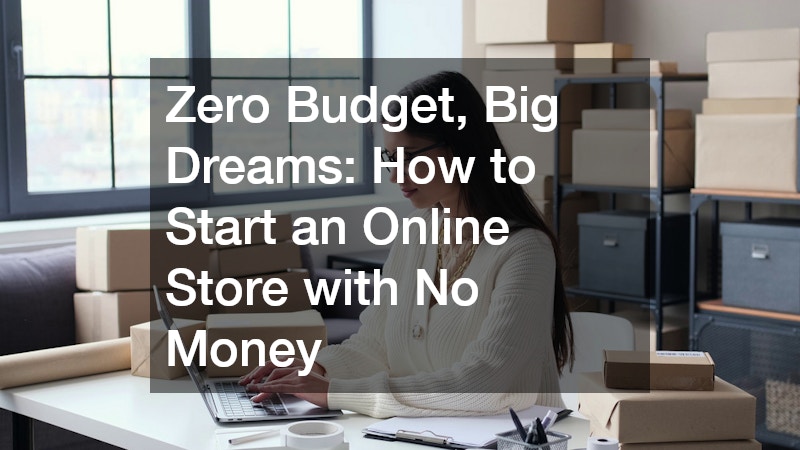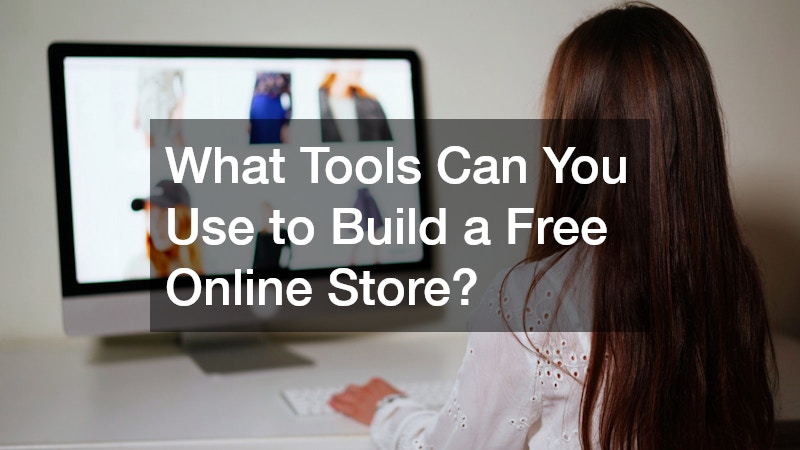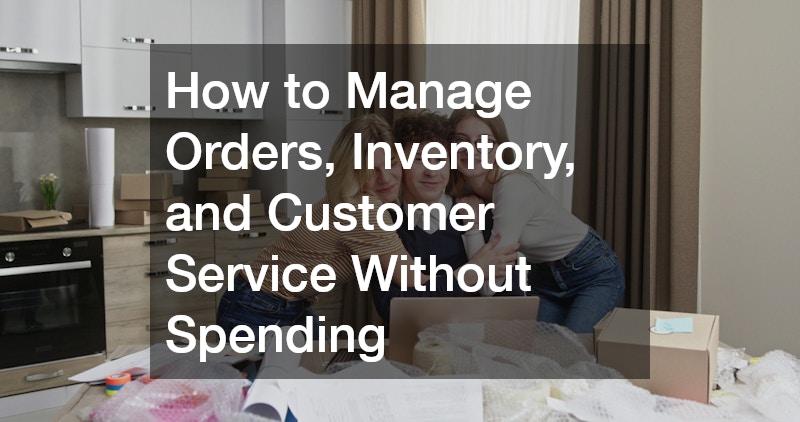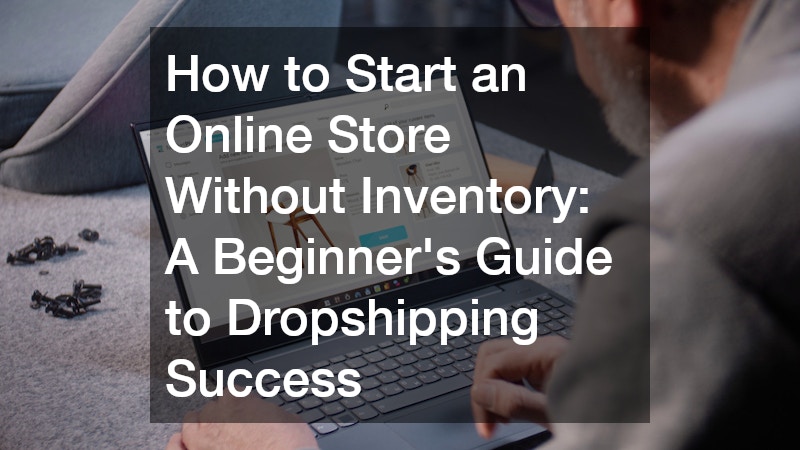
Starting an online store used to mean hefty investments in website design, inventory, and marketing. But today, the digital revolution has leveled the playing field. With the right tools and strategies, even aspiring entrepreneurs with zero budget can launch an e-commerce store and begin generating income.
If you’re business-minded but strapped for cash, this guide is for you. We’ll walk you through every step—from choosing the right niche and business model to setting up your store and promoting it—all without spending a single dollar upfront. You’ll learn how to turn ambition into action, using free resources and low-risk business models to kickstart your journey into the world of online retail.
Find out how you can start an online store with no money and build something profitable from the ground up.
What Are the Benefits of Starting an Online Store with No Money?
Starting an online store with zero capital may sound too good to be true, but there are many valid reasons why entrepreneurs choose this route. It’s not just about saving money—it’s about testing ideas, validating markets, and gaining experience without risking your savings.
Key benefits include:
- Low Financial Risk – No upfront investment means less financial stress and more room for experimentation.
- Rapid Market Entry – Thanks to ready-made platforms and drop-in tools, you can launch a store in hours or days.
- Scalable Model – Free tools allow you to scale as you grow, only paying when you start making profits.
- Testing Without Commitment – Try multiple niches or products without tying up funds in inventory.
If you’re ready to start lean and learn as you go, you’ll find that a no-budget store can be a surprisingly effective starting point.
How to Choose the Right Business Model on a Zero Budget
When you have no money to invest, picking the right business model is critical. Some models require inventory and fulfillment costs upfront, while others let you operate with almost no overhead.
The most budget-friendly e-commerce business models include:
- Dropshipping – You only buy products from suppliers after making a sale. No inventory needed.
- Print-on-Demand (POD) – Design custom products like t-shirts, mugs, and posters. The supplier prints and ships them.
- Digital Products – Sell eBooks, templates, guides, or courses. No physical inventory means zero production cost.
- Affiliate Marketing – Promote other people’s products and earn a commission for every sale.
Each of these models allows you to operate an online store with minimal to no startup costs. Choose one that fits your skills, goals, and the audience you want to serve.
What Tools Can You Use to Build a Free Online Store?
You don’t need to hire a web developer or spend thousands on a custom site. There are plenty of platforms and tools that let you build a functional, attractive online store for free.
Recommended free e-commerce platforms:
- Shopify Starter (Free trial) – While not permanently free, Shopify offers a 3-day trial plus $1/month for three months, great for testing.
- Big Cartel – A free plan allows up to 5 products and includes basic customization tools.
- Ecwid – Offers a completely free plan for small product catalogs.
- Square Online – Provides a no-cost online store connected to your Square POS system.
- WooCommerce + WordPress.com – You can start for free using WordPress’s free hosting tier and WooCommerce’s core plugin.
Helpful design and branding tools (also free):
- Canva – Design logos, banners, product labels, and ads with easy templates.
- Unsplash or Pexels – Free stock images for your store and marketing materials.
- Mailchimp (Free Plan) – For collecting emails and sending newsletters up to 500 subscribers.
Pick the combination of tools that matches your technical skill level. You can upgrade later as your business grows.
How to Find Profitable Product Ideas Without Spending Money
The most successful online stores solve problems or satisfy specific customer needs. Even without startup funds, you can find profitable products using research, trends, and validation strategies.
Tips for finding product ideas on a zero budget:
- Use Google Trends – Explore what’s trending and how demand changes over time.
- Browse Amazon Best Sellers – See what’s hot in different categories.
- Reddit and Forums – Discover real-world problems people are trying to solve.
- TikTok or Instagram – Track viral products and emerging micro-trends.
- Etsy and Pinterest – Great sources for niche and handmade product inspiration.
Once you identify a product idea, validate it by asking people in online communities, running polls, or using platforms like Reddit and Quora. Avoid investing time in products with little to no demand.
How to Start an Online Store with No Money: Step-by-Step Guide
Starting a business on a tight budget means leveraging free tools and smart strategies. Here’s a practical step-by-step guide to launching your store without any capital.
Step 1: Choose a Business Model and Niche
Pick a budget-friendly model like dropshipping, POD, or digital products. Focus on a niche with a clear audience and specific needs.
Step 2: Pick a Free e-commerce Platform
Choose Big Cartel, Ecwid, or Square Online to set up your store. Customize the design and create a clean, branded homepage.
Step 3: Add Products
Use free mockup tools for POD or import supplier products using a dropshipping plugin. Write compelling product descriptions and use high-quality images.
Step 4: Set Up Payment Methods
Most free platforms integrate with PayPal or Square. These payment processors don’t require setup fees and only deduct a fee per transaction.
Step 5: Launch and Promote
You’re live—now it’s time to promote! Use organic methods like social media, SEO, and email marketing to drive traffic without spending on ads.
How to Market Your Online Store for Free
Promotion can be a significant cost for new businesses, but there are many ways to attract traffic without spending a dime. You’ll need creativity, consistency, and a bit of hustle.
Free marketing strategies to grow your store:
- Organic Social Media Marketing
Post regularly on Instagram, Facebook, and TikTok. Engage with your target audience and use relevant hashtags. - SEO (Search Engine Optimization)
Optimize your product descriptions, blog posts, and page titles for keywords. Focus on long-tail keywords with low competition. - Email Marketing
Offer a free downloadable (like a PDF or guide) in exchange for emails. Use Mailchimp or Brevo to send free campaigns. - Pinterest Marketing
Pin your product photos and link back to your store. Pinterest is a visual search engine with long-term reach. - Join Facebook Groups and Forums
Be helpful, not spammy. Share insights and occasionally mention your store or products when relevant. - Start a Blog
Writing blog posts related to your niche can boost your SEO and establish you as an authority.
By combining several of these tactics, you can build traction without touching your wallet.
How to Manage Orders, Inventory, and Customer Service Without Spending
Once the orders start coming in, managing operations can feel overwhelming. Fortunately, if you’re using dropshipping or POD, most of the heavy lifting is handled by suppliers.
Here’s how to manage operations for free:
- Inventory Management
Dropshipping and POD providers like Printful and Spocket sync automatically with your store. - Order Processing
Orders are routed automatically through your provider. You’ll only need to confirm and monitor shipments. - Customer Service
Use a free helpdesk tool like Tawk.to for live chat or Gmail for email support. Keep response times fast and tone professional. - Returns and Issues
Have a clear policy and FAQ section on your website. Work with suppliers to resolve fulfillment problems promptly.
Efficient systems don’t require money—they just need planning and consistency.
Common Mistakes to Avoid When Starting an Online Store with No Money
Starting a store for free doesn’t mean it’s free of mistakes. Many beginners waste time or miss opportunities due to avoidable errors.
Watch out for these mistakes:
- Choosing the Wrong Platform – Don’t use platforms that charge hidden fees or limit scalability.
- Skipping Market Research – Avoid investing time in products with no demand.
- Poor Branding – A lack of cohesive branding makes your store seem untrustworthy.
- Neglecting SEO – Without paid ads, SEO is your best friend. Don’t ignore it.
- Inconsistent Marketing – Posting once a week won’t get you noticed. Be consistent.
Being aware of these mistakes early can save you time and lead to faster success.
When Should You Start Investing Money in Your Store?
As your store begins generating revenue, reinvesting profits is the smartest way to scale. But when is the right time?
Start investing when:
- You’re consistently making sales.
- Free tools start limiting your functionality.
- You need better features (custom domain, analytics, email automation).
- You want to run paid ads for faster growth.
Start small—like upgrading to a paid plan or paying for better product photos. Always prioritize investments that improve customer experience or increase traffic.
Can You Build a Strong Brand Without a Marketing Budget?
Absolutely. While big brands often rely on massive ad spend, small online stores can build authentic, memorable branding through consistency, creativity, and customer connection—none of which require money. Branding is more than just a logo or color scheme; it’s the experience you deliver across every touchpoint, from your website to your social media presence.
Tips to build your brand for free:
- Create a unique brand voice – Speak consistently across product descriptions, social posts, and emails.
- Use free design tools – Canva offers great templates for logos, banners, and social graphics.
- Be active and helpful online – Comment in niche communities, answer questions, and build trust organically.
- Show behind-the-scenes content – Humanize your brand with authentic, relatable stories.
By focusing on value, consistency, and connection, you can create a brand people trust—even with a zero-dollar marketing budget.
Final Thoughts
You don’t need deep pockets to start an online business. What you need is a plan, patience, and a strong work ethic. By choosing the right business model, using free tools, and learning to market without ads, you can create an online store that grows organically and turns dreams into income.
Starting with nothing doesn’t mean settling for less—it means you’re building a business the smart, sustainable way.



